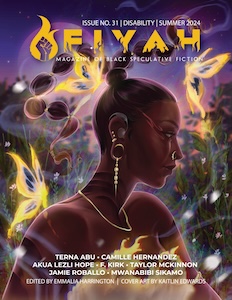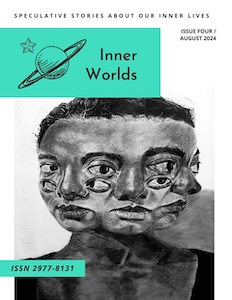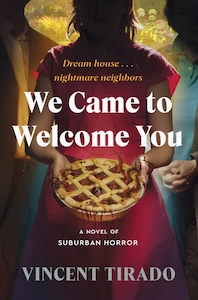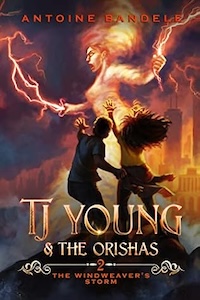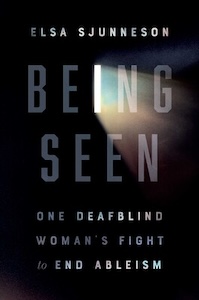“Contingency Plans for the Apocalypse And Other Possible Situations” by S.B. Divya
A sickly biologist shuts herself off from the world and its deadly pollutants to research her beloved microbiota in peace – until a chance encounter drives her to venture out into an unlivable Bangalore. In a dystopian Arizona, a couple performs forbidden life-saving abortions amid the threat of tanks and drones, the strict report of automatic weapons and the spying eyes of neighbors. A young woman competes in a grueling challenge, determined to win a place in a world where body modifications equal class and grant people the privilege of transcending gender.
In this collection of 14 layered stories featuring dying cities, undying humans, amorphous bodies, cyborg racers and magic beetles, internationally acclaimed writer and data scientist S.B. Divya treads the line between the present and the future, while exploring the eternal conundrums of identity and love in speculative worlds.
Review
I’ve read (and reviewed) S.B. Diva’s two Alloy Era Novels “Meru” and “Loka” so I knew what to expect from her writing and the short stories were no surprise. I really enjoyed them all and how the author handles everything from disability to gender to various technologies and how it can be used for good or bad. I really enjoyed all of these stories though with any short story there are a couple I wish had been longer.
LOSS OF SIGNAL – This is an interesting story about a dying teenager whose consciousness was uploaded into a spaceship – the first test flight of such ships as an alternate way to explore space. It’s a lot of internal thoughts as the teen is flying the ship towards the moon and thinking about his previous years and the choices he’s making.
CONTINGENCY PLANS FOR THE APOCALYPSE – A dark story about surviving after being attacked for performing lifesaving abortions in Arizona. The surviving spouse (who always expected to be the one killed) has to get their children out of the state. One might wonder if the cost of staying was too great but the help they gave was also vital.
MICROBIOTA AND THE MASSES: A LOVE STORY – This one would not be my usual cup of tea since it’s a love story but it’s got an interesting premise. The main character, who is also a biologist, has been isolated in their home because of the pollution making them sick. So their house is completely contained with clean air and water. The way they end up making various choices was interesting and I liked the way they end up helping everyone while falling in love with a repair man who came to their home.
AN UNEXPECTED BOON – This was an interesting story of a young girl who has ODC or Autistic traits (though it’s never named as such) and her older brother. The brother is a bit of a jerk but it’s actually an understandable issue because he’s been left to take care of her temporarily by his parents and he insisted he could do it without considering what it would mean. I like the way it plays out though with the girl being stronger than he thinks despite everything that happens.
NAVA – I’m pretty sure this is a story set in the author’s Alloy Era series (probably an early version since this book was published before both “Meru” and “Loka”). Or it’s different take on that universe. It has an interesting concept with a living ship having been created and needing to learn how to function as its maker intended.
BINARIES – Interesting glimpses in time of a person’s long life. The method for which they live their long life isn’t explained but it seems like it has to do with being converted to digital signals. But in the end though it has to do with family and finding someone who was lost.
THE EGG – This one is really short on details and the ending is a little vague but it’s a look at choices people make and consequences. The vague unknown ending is actually the point given what happens. The looming unknown after a death changes everything.
DUSTY OLD THINGS – Cool story about someone talking to an alternate version of themselves through a light board. It’s not clear exactly how the technology worked as the version that discovered the technology is the one in the alternate universe. I liked the way it played out and that the differences in their lives was an important part of the story.
THE BOY WHO MADE FLOWERS – In a world where superpowers are real a boy develops the power to make flower. He of course hates it at first but soon learns what his power can mean for others. I really enjoyed how this one ended up.
SHIPS IN THE NIGHT – A very brief look at the life of someone who can see the future and what happens when they meet an immortal. Interesting story and I liked the way it plays out. Probably not what you’d expect but it makes sense when you think about it.
GAPS OF JOY, AND A KNOT FOR LOVE – This one is a little weird as I’m not sure what the ending is saying about the persons powers vs reality. He has the power to collect and share happiness but it’s not all that his family needs.
STRANGE ATTRACTORS – this one is an interesting look at a couple who marries and divorces and then meets again centuries later (no explanation other than technology being available). I actually liked the ending of this one because it felt very realistic for people who keep meeting up again despite everything.
SOFT WE WAKE – A person tries to adjust after waking up in the far future without the person who was supposed to be there with him. Everything is so different and he’s not comfortable with all the changes. I liked the way it played out and the friendship he ends up developing with another person who was revived at the same time. Her situation is different but with similar ideas of not being sure how to live again in such a changed world.
RUNTIME – I believe this one is the longest of the short stories in the book but it has a lot to say. I’m not entirely sure how the postnatal licensing works but naturally it’s yet another way to keep poor people poor since they can never afford to pay the fees and without it they can’t get jobs or better educations. Anyway the main character attempts a race to earn more money to get out of their situation. The way things go down was exciting and naturally it doesn’t go as planed. I did like how it worked out though.
Warnings and additional reviews are available on the StoryGraph page for “Contingency Plans for the Apocalypse And Other Possible Situations”.
Book Details
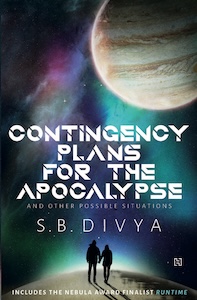
- Author’s Website
- S.B. Divya
- Publisher / Date
- Hachette India January 1, 2019
- Genre
- Science Fiction, Short Stories
- Page Count
- 264
- Completion Date
- August 31, 2024
